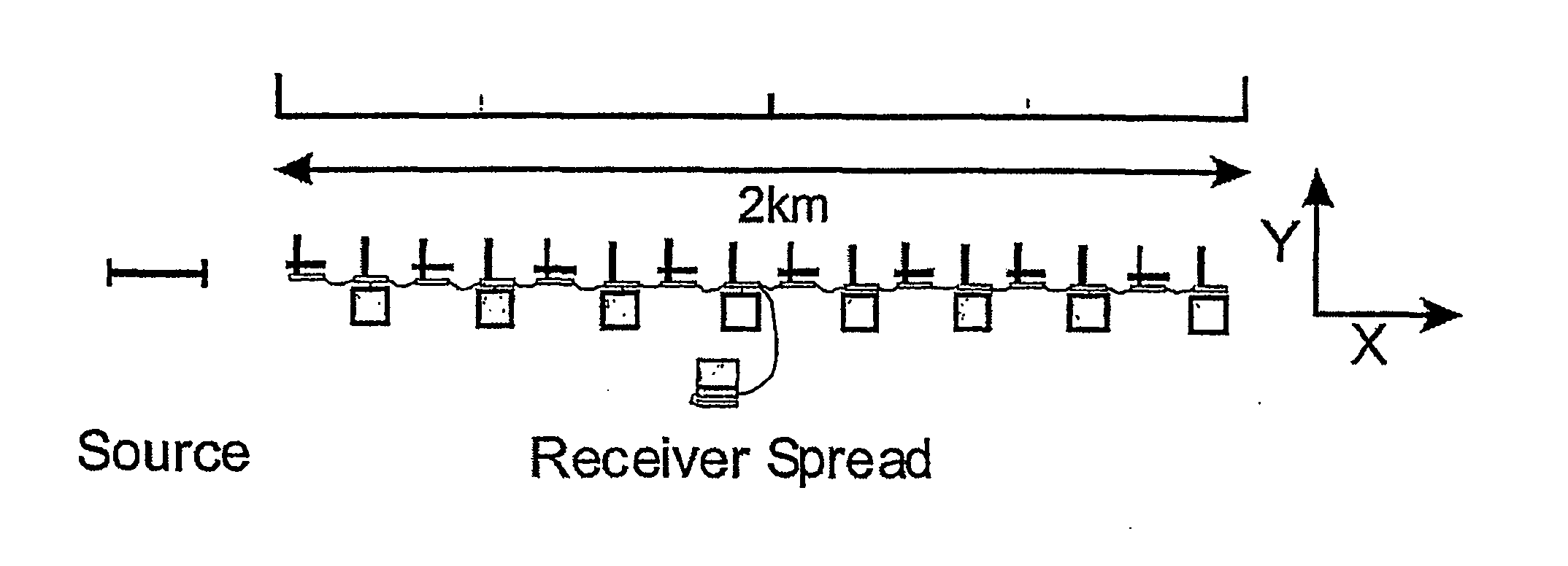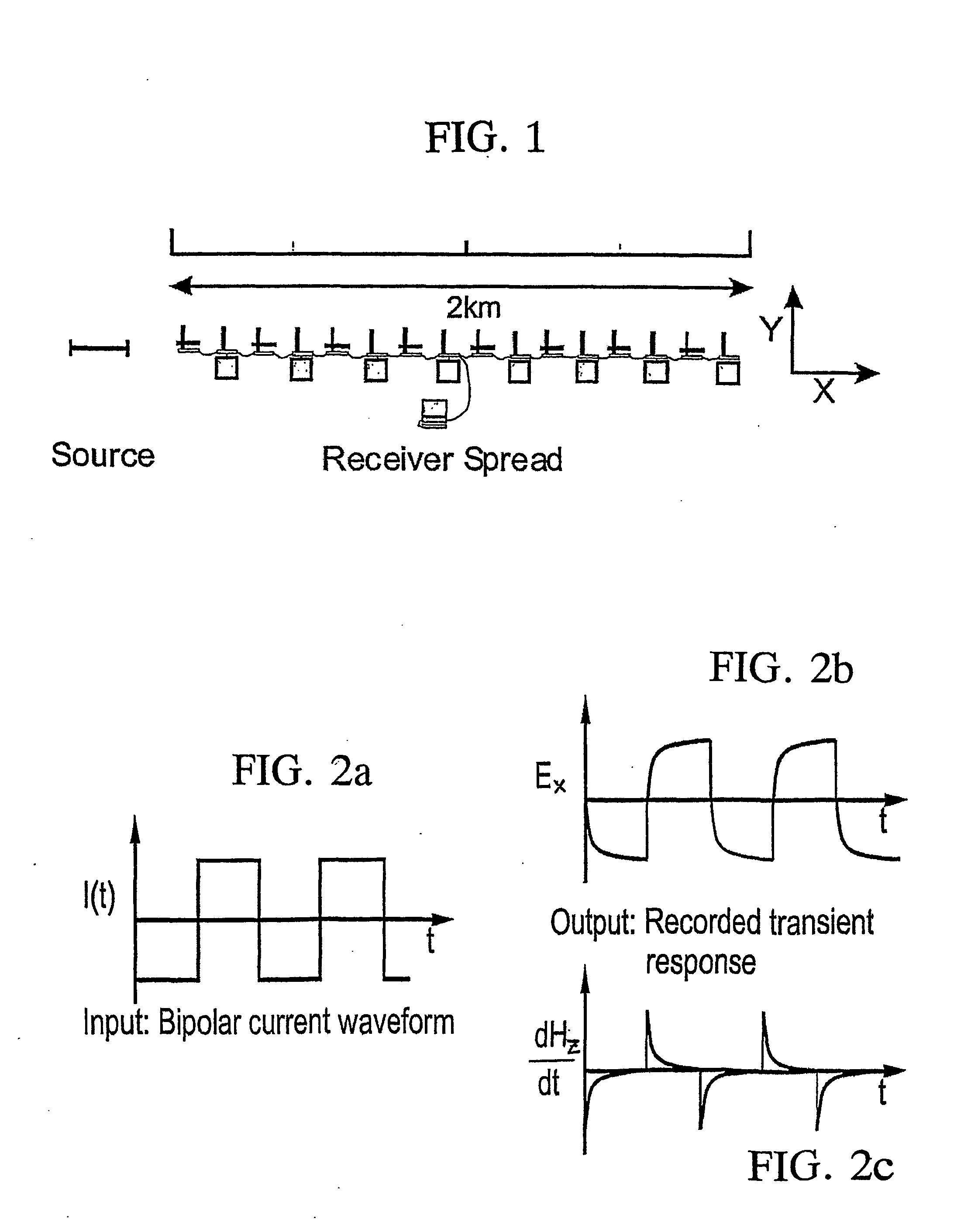Detection of subsurface resistivity contrasts with application to location of fluids
a technology of resistivity contrast and subsurface, applied in the field of mapping subsurface resistivity contrast, can solve the problems of not being able to input an exact square wave, not being able to recognise the importance of measuring system response, and putting a lot of effor
- Summary
- Abstract
- Description
- Claims
- Application Information
AI Technical Summary
Benefits of technology
Problems solved by technology
Method used
Image
Examples
Embodiment Construction
[0049] Multichannel Transient ElectroMagnetic (MTEM) data can be acquired in a number of different ways. By way of example only, there is described below elements of the data acquisition system, as used in the THERMIE project OG / 0305 / 92 / NL-UK, and as described in [14] above. FIG. 1 shows a typical configuration of a source and a line of receivers. The source is a current in a wire grounded at each end; in this case the two ends are 250 m apart. The receivers are represented as boxes in FIG. 1, each with two channels, and are spread out over a line 2 km long, which, in this case, is in line with the source. The receivers measure two kinds of electromagnetic response: potential differences, and the rate of change of the magnetic field. Potential differences are measured between two grounded electrodes, typically 125 m apart, while the rate of change of the magnetic field is measured with loops of wire, typically 50 m by 50 m square loops with many turns. FIG. 1 shows thirty-two receiv...
PUM
 Login to View More
Login to View More Abstract
Description
Claims
Application Information
 Login to View More
Login to View More - R&D
- Intellectual Property
- Life Sciences
- Materials
- Tech Scout
- Unparalleled Data Quality
- Higher Quality Content
- 60% Fewer Hallucinations
Browse by: Latest US Patents, China's latest patents, Technical Efficacy Thesaurus, Application Domain, Technology Topic, Popular Technical Reports.
© 2025 PatSnap. All rights reserved.Legal|Privacy policy|Modern Slavery Act Transparency Statement|Sitemap|About US| Contact US: help@patsnap.com



